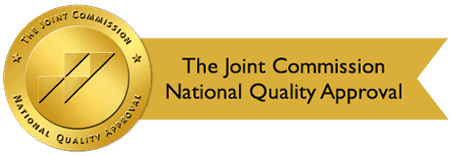By: Design for Change Recovery
Categories:
Holiday Spirits: Recognizing the Warning Signs of Alcohol Abuse During Thanksgiving and Beyond
You are here:The holiday season brings joy, family gatherings, and celebration—but it can also bring hidden struggles. For many Americans, Thanksgiving marks the start of a period where alcohol use increases dramatically. While most people enjoy a drink or two without issue, for others, the line between social drinking and harmful dependence can blur quickly.
At Design for Change Recovery in Lancaster, California, we understand how emotional triggers and family dynamics can intensify during the holidays. Knowing the warning signs of alcohol abuse can help you protect your loved ones—and yourself—during this time of year.
Why Alcohol Problems Spike During the Holidays
Between Thanksgiving and New Year’s, alcohol-related incidents and hospital visits increase significantly. According to the National Institute on Alcohol Abuse and Alcoholism (NIAAA), more than 40% of traffic-related deaths during the holidays involve alcohol. Beyond accidents, emotional stress, grief, loneliness, and family conflict can drive individuals to drink more heavily.
Common triggers include:
- Social pressure to drink at gatherings
- Financial stress or end-of-year worries
- Grief or loneliness during family events
- Unresolved family tension or trauma
- Seasonal affective disorder (SAD) or depression
Emotional and Behavioral Warning Signs
Early detection saves lives. If you notice these changes in yourself or someone you love, it could signal developing alcohol dependence:
- Using alcohol to manage stress, sadness, or anxiety
- Irritability or defensiveness about drinking habits
- Neglecting family, work, or personal commitments
- Isolating from loved ones to drink alone
- Hiding bottles or lying about consumption
- Increased tolerance (needing more drinks to feel the same effects)
- Memory blackouts or frequently “not remembering” the night before
These warning signs often appear gradually, but the holidays can amplify them as stress and social drinking collide.
Physical Red Flags to Watch For
- Bloodshot eyes or persistent hangovers
- Tremors, sweating, or shakiness in the morning
- Unexplained fatigue or poor hygiene
- Changes in appetite or weight
- Frequent stomach pain or nausea
- Difficulty sleeping or increased anxiety when sober
If these symptoms are noticeable, the body may already be dependent on alcohol. Stopping suddenly can cause withdrawal symptoms like tremors, sweating, or severe anxiety—making a medical detox the safest option.
Holiday Gatherings: When “Normal” Drinking Crosses the Line
During holidays like Thanksgiving, alcohol is often normalized. But when someone consistently drinks before or after events—or shows visible signs of intoxication early in the day—it could indicate deeper issues. Be mindful if you notice:
- Pre-drinking before social events
- Secretive refilling of cups or spiking non-alcoholic beverages
- Anger, arguments, or emotional outbursts linked to alcohol
- Excuses for missing family meals or sleeping excessively
These behaviors can indicate that drinking is no longer a choice but a compulsion. Addressing the problem early can prevent long-term damage to health and relationships.
How Families Can Approach a Loved One
It’s not easy to confront someone about drinking, especially during the holidays. But compassion and preparation can make all the difference. Try these steps:
- Choose the right time: Avoid emotional or intoxicated moments—find a calm, private setting.
- Use empathy, not blame: Express concern using “I” statements (“I’ve noticed you’ve been drinking more and seem stressed”).
- Offer help, not ultimatums: Share resources and support options rather than threats.
- Involve professionals: Sometimes an intervention with a counselor or therapist is the most effective way to begin.
Remember: confronting addiction is an act of love, not judgment.
California’s Approach to Alcohol Recovery
California offers a wide range of evidence-based recovery programs that combine medical care, therapy, and holistic healing. Facilities like Design for Change Recovery in Lancaster provide compassionate treatment in a serene environment that supports reflection and growth.
Programs may include:
- Detox and medical stabilization for safe withdrawal
- Residential inpatient rehab for focused therapy and peer support
- Outpatient programs for flexible care while maintaining daily life
- Family therapy to repair relationships and build accountability
- Aftercare planning to prevent relapse post-holidays
Staying Sober During the Holidays
- Plan alcohol-free gatherings or provide non-alcoholic options
- Bring your own beverage to avoid pressure
- Have an exit strategy if triggers arise
- Stay connected with sober friends or support groups
- Focus on gratitude, mindfulness, and connection instead of drinking
For those in recovery, remember—saying “no” protects your peace and your progress.
FAQ: Alcohol Misuse During the Holidays
Why do alcohol problems increase during the holidays?
Stress, loneliness, and social pressure all contribute to higher drinking rates. Emotional triggers make this season especially risky for those with a history of alcohol use disorder.
What are early warning signs of alcohol abuse?
Increased tolerance, drinking to cope, memory blackouts, and irritability when not drinking are all signs of developing alcohol dependence.
How can I help someone who drinks too much?
Speak with compassion, avoid confrontation during intoxication, and share professional help options. Design for Change Recovery offers confidential support year-round.
Is treatment available during the holidays?
Yes, many California centers—including Design for Change—stay open through the holidays, providing 24/7 detox and inpatient care.
Does insurance cover alcohol rehab?
Most insurance plans cover treatment. You can verify your benefits online in minutes.


